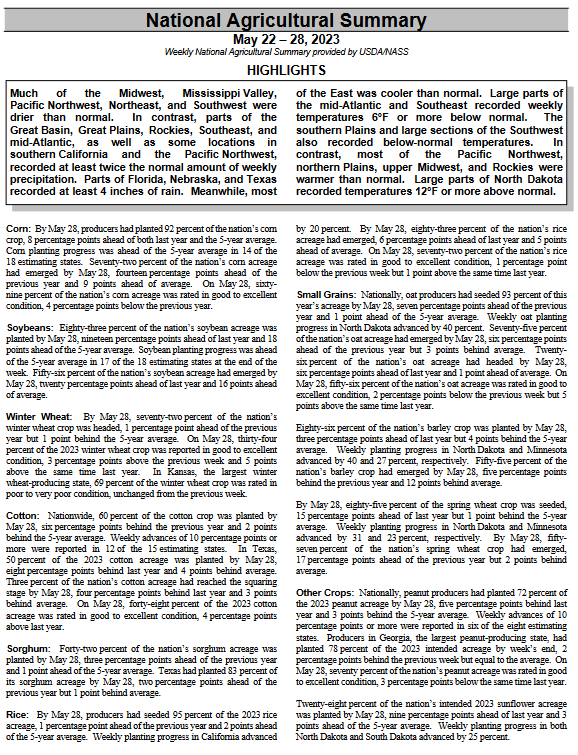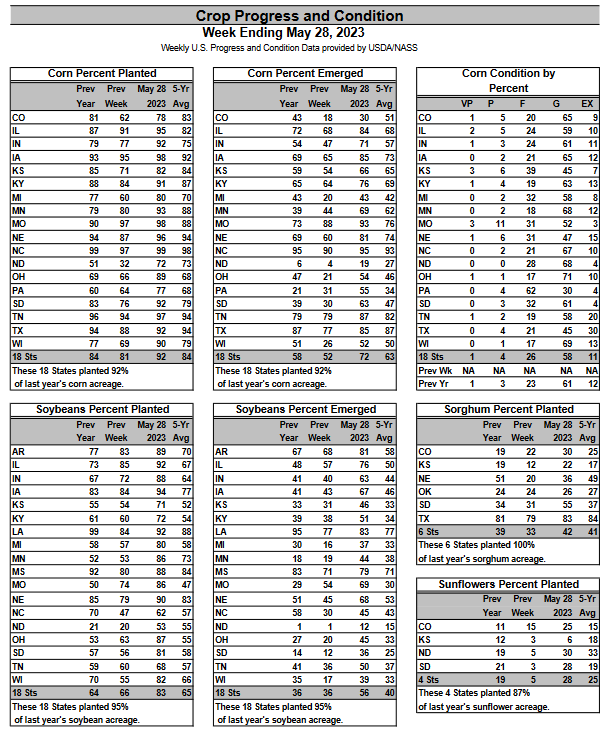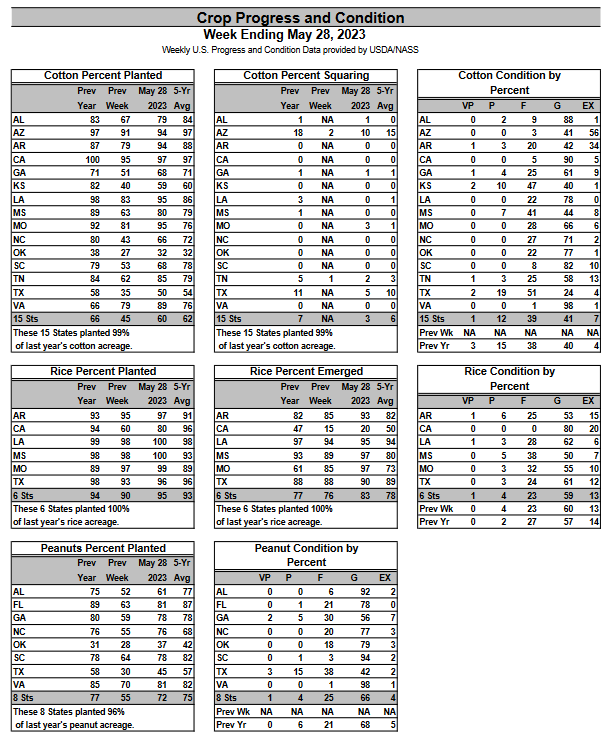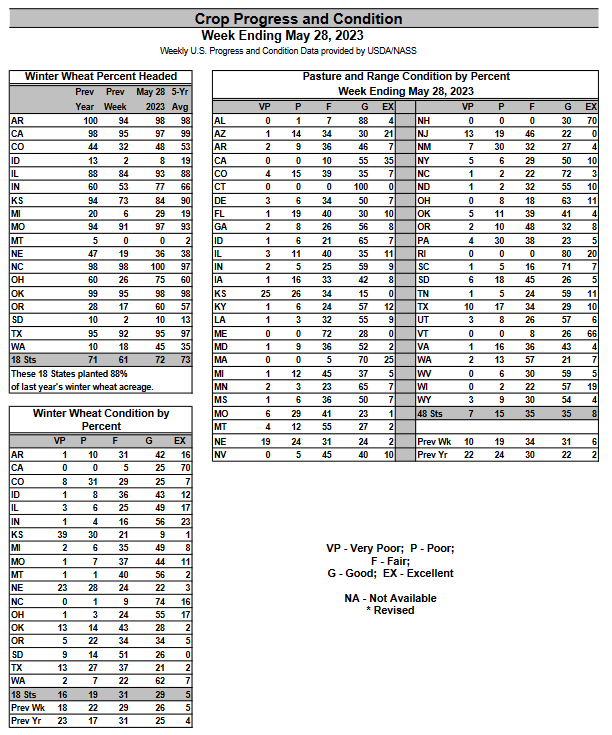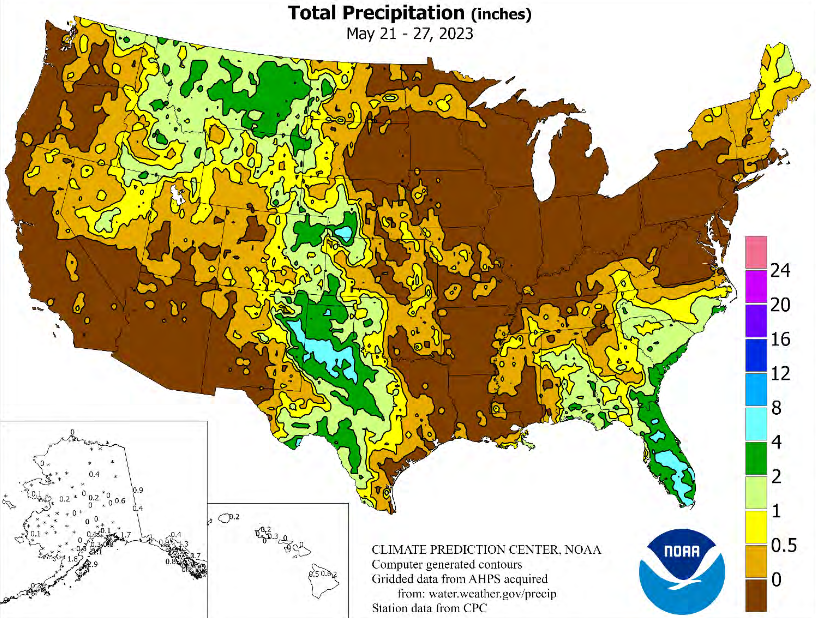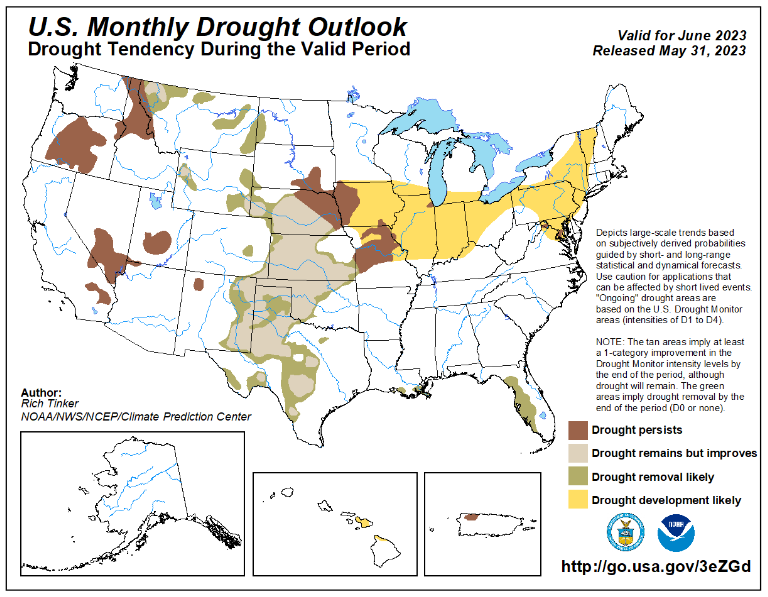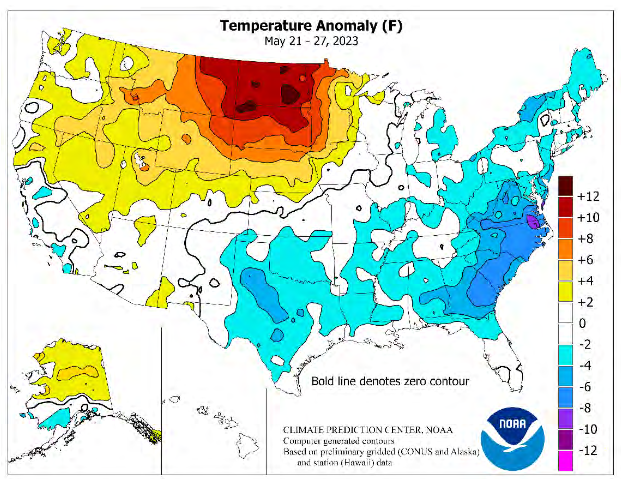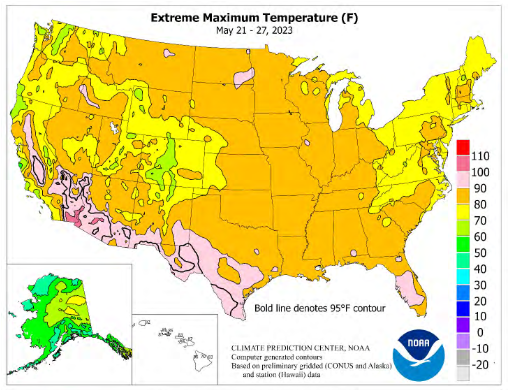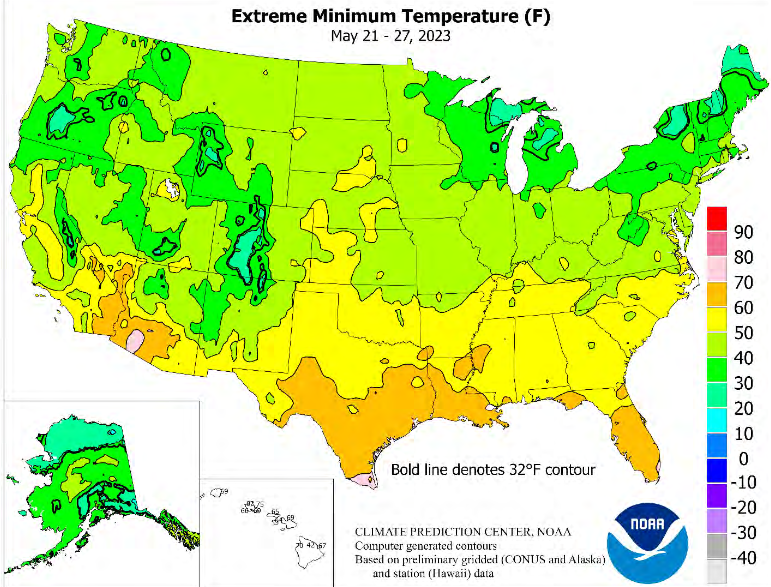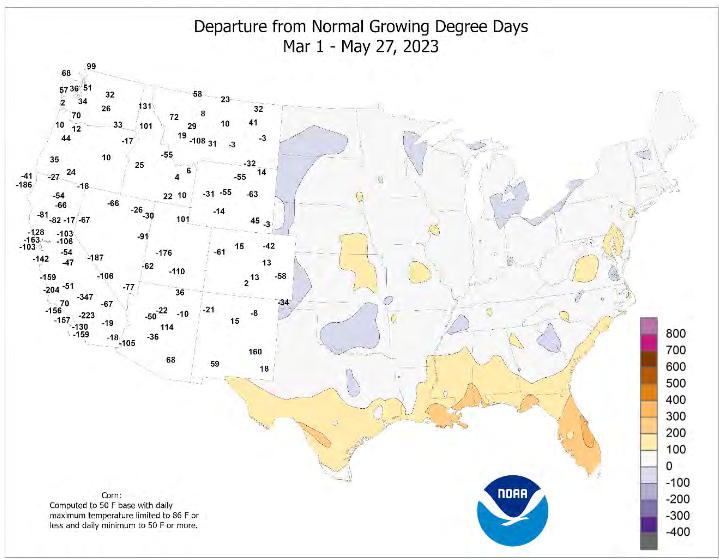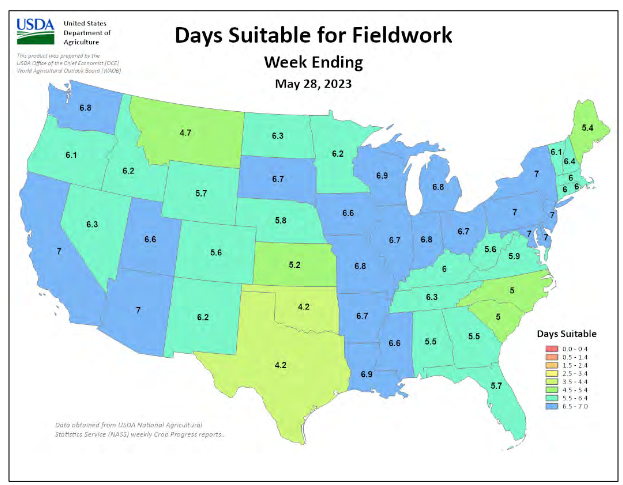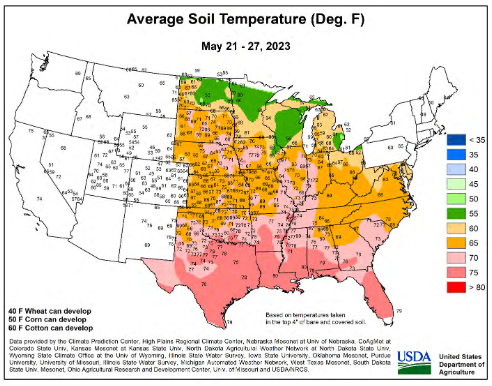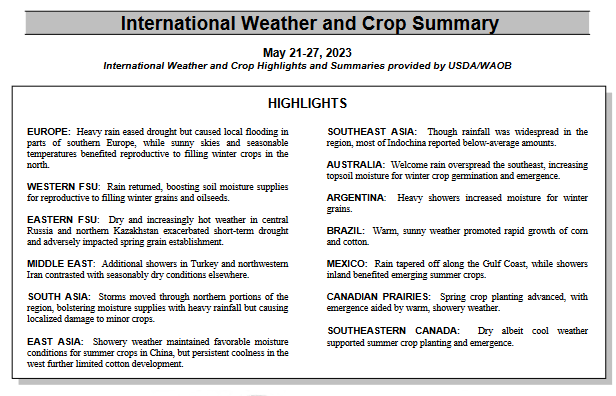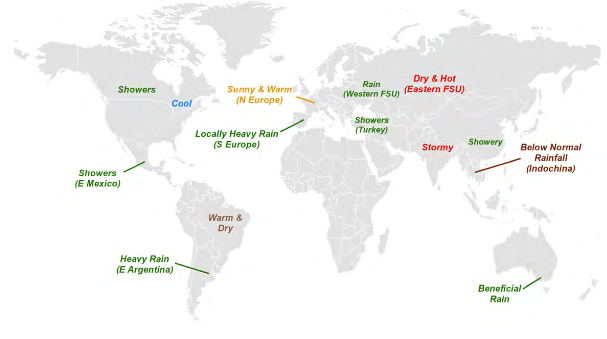This article is based primarily on the May 31, 2023, USDA Crop Bulletin which covers the May 21 – 28 period of time. The USDA report usually becomes available on Tuesdays but due to the Memorial Day Weekend it was not published until Wednesday and Wednesday night I published the end-of-month update of the June weather outlook (click HERE to read) so I am publishing the crop article tonight a day late.
Almost all crops are doing well. Corn and soybeans, which are two of the major crops, are doing very well. We will see how they handle the drought anticipated in certain areas in June.
We also include the May 2023 report on the prices received and paid by farmers in April 2023.
The article includes a short international review of agricultural conditions.
We start with the National Agriculture Summary. The Tables below the summary may have additional data. The boxes with my comments may be incomplete so for crops of interest check the data out yourself to be sure.
| Below is pretty much the same information in table format. However, there is additional information in these tables. |
| All these crops look good with soybeans looking really good. We will see how corn fairs in states forecast to have a precipitation deficit in June. |
| These crops are ok. Peanuts could be doing better. |
| Winter Wheat looks ok here but there has been record abandonment which we reported on HERE. I am assuming that abandoned acres drop out of the reporting. Pasture and Range conditions are much improved over the prior year. |
Some additional detail is provided HEREIt is mostly some additional weeks of data and it is all in larger print. |
Weather Conditions
| It is easy to see the wet and the dry areas in the above map. |
| This is a forecast unlike most of the other graphics which reflect the prior week usually May 21 – 27 but sometimes to May 28. The map above is the forecast for June. It shows a lot of drought removal but it also shows the development of drought from Iowa to Vermont. A lot of that area is corn country so we will be watching how this impacts the corn crop. |
–
| You can see the warm anomaly which may have been beneficial to crops in that area, |
–
| I do not see anything concerning here. But it is warm enough that there is a need for precipitation and a week of dryness can be a problem. |
| The minimum temperatures and the cold anomalies are what is of most interest this time of the year. We had some areas that had temperatures of 32F or less but it needs to be colder than 32F usually to do significant damage and most of these in the 32F contour are in the mountains i.e. not major growing areas. |
| This is the accumulated version of this map. Overall it looks positive with only a few areas in deficit and the areas with positive values were probably not warm enough to be detrimental to the crop. |
Some additional information
| The yellows and oranges are of interest. They show areas where the number of days suitable for fieldwork was low. There were no states in those categories this past week. Texas and Oklahoma were the states with the fewest days suitable for fieldwork. |
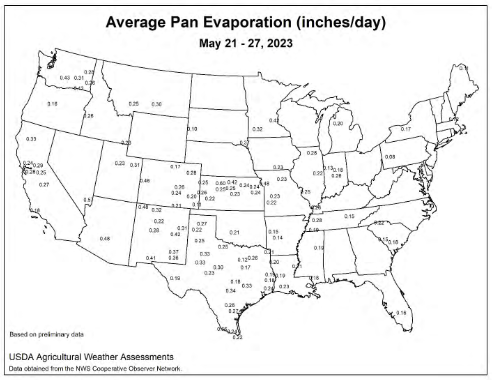
| Pan evaporation refers to the technique (water in a pan) for determining the amount of drying that took place in different areas. Sometimes satellite imagery is used instead of this old-fashioned method but it seems to be preferred in the weekly Crop Bulletin. Very high or low values might be the result of faulty measurement equipment but I did not notice any. However, I did not study the map carefully. The values that I see are pretty low. That is not surprising given the wet cool weather in much of the area where these readings were taken. When I see values greater than 1.0 I am concerned. |
| This looks good. |
Let’s take a look at Agriculture prices
| This shows two indices. One relates to prices received by farmers. The other relates to prices paid by farmers. They also show the ratio of the two indices but I am not sure that ratio is easily interpreted. We will go into that at some other time. But one can be fairly confident that April was better for farmers than March. The full report can be accessed HERE |
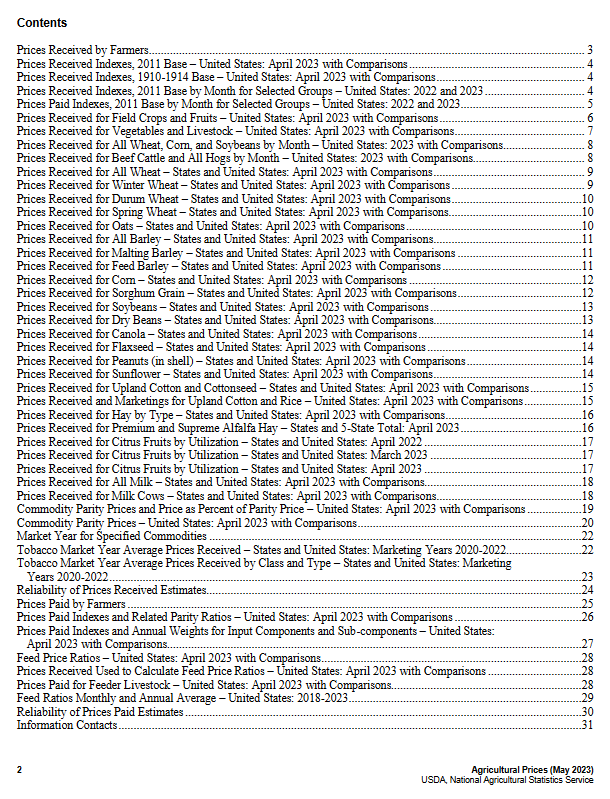
The full report can be accessed HERE
International
| In the above, only the Eastern FSU had unfavorable conditions but from other sources, China has suffered a considerable reduction in the Winter Wheat harvest. Source |
And the map
| This locates some of the information on a map. |
Sources of Information
Weekly Updates can be found HERE
and perhaps more directly HERE
Additional Useful Sources of Information
WASDE: World Agricultural Supply and Demand Estimates HERE
NASS Report Schedule HERE
Executive Briefings HERE
Economics and Prices HERE
–
| I hope you found this article interesting and useful. |
–

